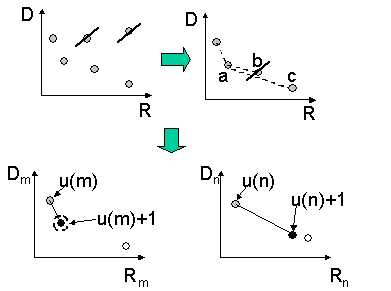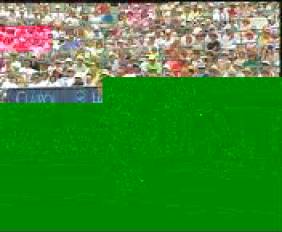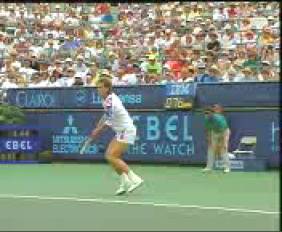 |
About AMP Lab Projects Downloads Publications People Links
Project - Joint Source-Channel Coding using Rate Shaping
| Motivation and Goal |
Is it a dream to watch the news clip/newest movie trailer while you are out of the office? To overcome the high error rate of the wireless channel as well as utilizing the bandwidth intelligently, we use rate shaping on coded video bitstream to deliver the video content effectively.
Joint Source/Channel Coding with Rate Shaping
The proposed system of joint source-channel coding with rate shaping is shown as follows in Figure 1.
|
|
|
(a) Encoder/Sender |
|
|
|
(b) Decoder/Receiver |
Figure 1. System overview of the joint source/channel coder. (a) sender; (b) receiver
The video bitstream to be shaped is coded in multiple layers, using scalable coding, followed by unequal error correction coding (ECC) in each layer. If each layer of the scalable coded video bitstream is protected by a segment of error correction codes, there are D (D: number of scalable coding layers) scalable coding segments and D error correction coding segments for the rate shaper to choose from to send to the wireless network. For example, if there are 2 layers of scalable coding, there are a total of 6 combinations of segments for the rate shaper to choose from. That is, the combinations (x, y) = {(0, 0), (1, 0), (1, 1), (2, 0), (2, 1), (2, 2)} are valid. The first entry being the number of scalable coding segments chosen and second entry being the number of error correction coding segments chosen. We can optimize the selection of the rate shaping by examining the discrete rate distortion map of these combinations as follows:

Figure 2. Rate distortion map example. D: distortion, R: rate, B, bandwidth requirement
Discrete Rate Distortion Combination
We further improve the system by smartly allocating the bandwidth budgets across coding units. The bandwidth allocation is accomplished by the discrete rate distortion combination algorithm illustrated below:

Figure 3. Discrete rate distortion combination algorithm
Experiment
Figure 4 compares the rate shaping results of the conventional method by Vass and Zhuang with the proposed rate shaping method using discrete rate distortion combination algorithm.
 |
 |
| (a) | (b) |
Figure 4. Sample frames of rate shaping results. (a) Vass and Zhuang's; (b) the proposed
Path-Based Rate Shaping
The path-constrained rate shaping can be applied for efficient multicast.

Figure 5. Path-constrained rate shaping
| Publications |
-
T. P.-C. Chen and T. Chen, "Adaptive Joint Source-Channel Coding Using Rate Shaping", to appear in ICASSP 2002, Orlando, FL, U.S.A., May 2002.
-
T. P.-C. Chen and T. Chen, "Life After Video Coding Standards: Rate Shaping and Error Concealment", Computer Science series of Springer Verlag for Visual Information System 2002, Hsinchu, Taiwan, March 2002.
| Our work is used by |
-
Computer & Communications Research Labs, Industrial Technology Research Institute http://www.ccl.itri.org.tw/
Any suggestions or comments are welcome. Please send them to Trista Pei-chun Chen.

